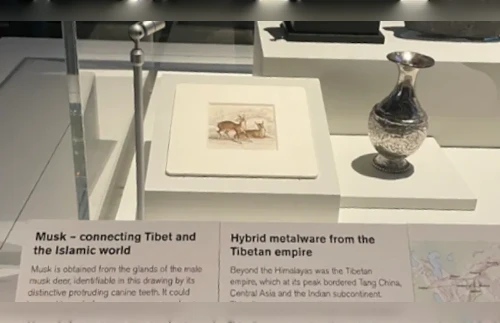
VOA spoke to Andy Pekosz, a professor of molecular microbiology at Johns Hopkins Bloomberg School of Public Health, about the coronavirus. His laboratory studies influenza and other respiratory viruses such as SARS, and hantaviruses.
Q: “If you look at this virus compared to the flu, you know, how do they compare with the risk of transmission, like infection rate, death rate, that kind of thing?”
PEKOSZ: “Yeah, so you know, the caveat is it’s still early in this coronavirus outb- epidemic, but everything right now looks like it’s probably not as severe as influenza would be. Based on, again, based on some of the data that’s coming out. Now that can change, but it certainly doesn’t seem like it’s — that it’s as concerning as, as you said, the current influenza outbreak, which has killed many more people this year, both in the United States, as well as globally.”
Q: “That’s interesting. Is it — like is it easier or harder to get than flu? You know, the death rate is a separate question.”
PEKOSZ: “Yep, so right now it seems like still not as easily transmissible as influenza is. But, you know obviously that number changes on a regular basis — on an almost daily basis based on the number of cases that are coming through. And so it’s been relatively contained f2or the time being, in China. So we’ll see how that, you know, if that continues to be the case.”
Q: “And about the death rate, I think I’ve seen that it’s like, you know, there’s just the raw numbers coming out of China. It’s about 2 percent, but that’s people whohave been inthe hospital right?”
Q: “So that’s interesting. So, you know, would you say that this is more or less concerning then, you know, then say a SARS?”
PEKOSZ: “Exactly! And so the big variable that we really just can’t quantify right now is how many people are getting sick with mild symptoms that don’t have them seek out health care? And how many actually don’t really have significant symptoms at all? And both of those numbers are going to be important for two things. One, like you said, it’s going to help us understand the true sort of fatality rate associated with this virus. And the second thing is that’s going to — knowing that number is going to help us understand how best to contain this disease in a certain — in the areas that it is right now.”
Q: “And about the death rate, I think I’ve seen that it’s like, you know, there’s just the raw numbers coming out of China. It’s about 2 percent, but that’s people whohave been inthe hospital right?”
PEKOSZ: “So right now I would I would probably rank it as a little bit more concerning than SARS, because it seems to be spreading in in a more efficient manner than SARS did. And even compared to MERS coronavirus, which has been in the news for the past few years as well. So it looks like it’s a virus that’s able to spread more easily, and that’s always a concern, because even if it’s a mild disease, right? It’s a new virus in the human population, so basically, everybody is susceptible. So if it does sort of become a global threat, even a mild virus, if it infects millions upon millions of people can induce pretty strong severe disease, and public health concerns.”
Q: “Yeah, and then compared to the flu, especially this year’s flu, where does it rank compared to that?”
PEKOSZ: “So far, it’s not as big of a concern as influenza has been this year.”
Q: “Why do you think it is that the flu is obviously a much more serious, in terms of numbers and everything, but not as — you know, people’s hair isn’t on fire about this.”
PEKOSZ: “Part of it I think, the fact that we hear about flu every year, and I think people get a little bit sort of desensitized to it. It’s one of the things they expect to see. And so they become a little bit complacent about, ‘Oh. Well, we expect to see flu.’ And so people start to think that this is the way, you know — this is an annual occurrence. There’s not much you can do about it. And therefore, I think the emphasis on doing things to prevent influenza isn’t as compelling to people.”
Q: “Yeah. It’s interesting. So let me ask you a couple of things about what’s changed? And we’re talking about — OK, so we have a flu vaccine, but when SARS came out, you know, another brand new disease — reading in the 20 (inaudible). Colleagues at at JAMA, they say it took about 20 months to get a vaccine into trials for SARS, and they’re saying it might be like three this time around. What has changed?”
PEKOSZ: “I think there’s a couple things. One is we have our experiences from making vaccine candidates for SARS, and for MERS. So this group of coronaviruses, we have a good understanding of what it would take to make a vaccine that works against these viruses. So when SARS first came out, we had no idea of how to make a good coronavirus vaccine. So now we’ve built on all of the data that scientists have generated with SARS and MERS, and so we have a good idea. The second thing is the technologies for making vaccines have just made leap year jumps in terms of how easy it is to make some of these vaccines. Importantly, there’s been a real emphasis on what we call vaccine platforms. Which is, you know, a general way to make a vaccine that you can then plug in very specific proteins from different viruses to make a specific vaccine. And that technology has really skyrocketed recently and is very easy to utilize and make bar vaccines from.”~VOA
Ukraine Reveals Handwritten Letter of a Fallen North Korean Soldier in Kursk
Syrians Are Not So Sure for Going Home
Golan Heights Druze Welcome New Syrian Rulers
Tibetans Demand Apology from the British Museum for Use of ‘Xizang’
Escaping from Scam Center on Cambodia’s Bokor Mountain
UN Security Council Meets to Discuss Children and Armed Conflict
10 Shocking Revelations from Bangladesh Commission’s Report About Ex-PM Hasina-Linked Forced Disappearances
Migration Dynamics Shifting Due to New US Administration New Regional Laws
Subscribe Our You Tube Channel
Fighting Fake News
Fighting Lies












